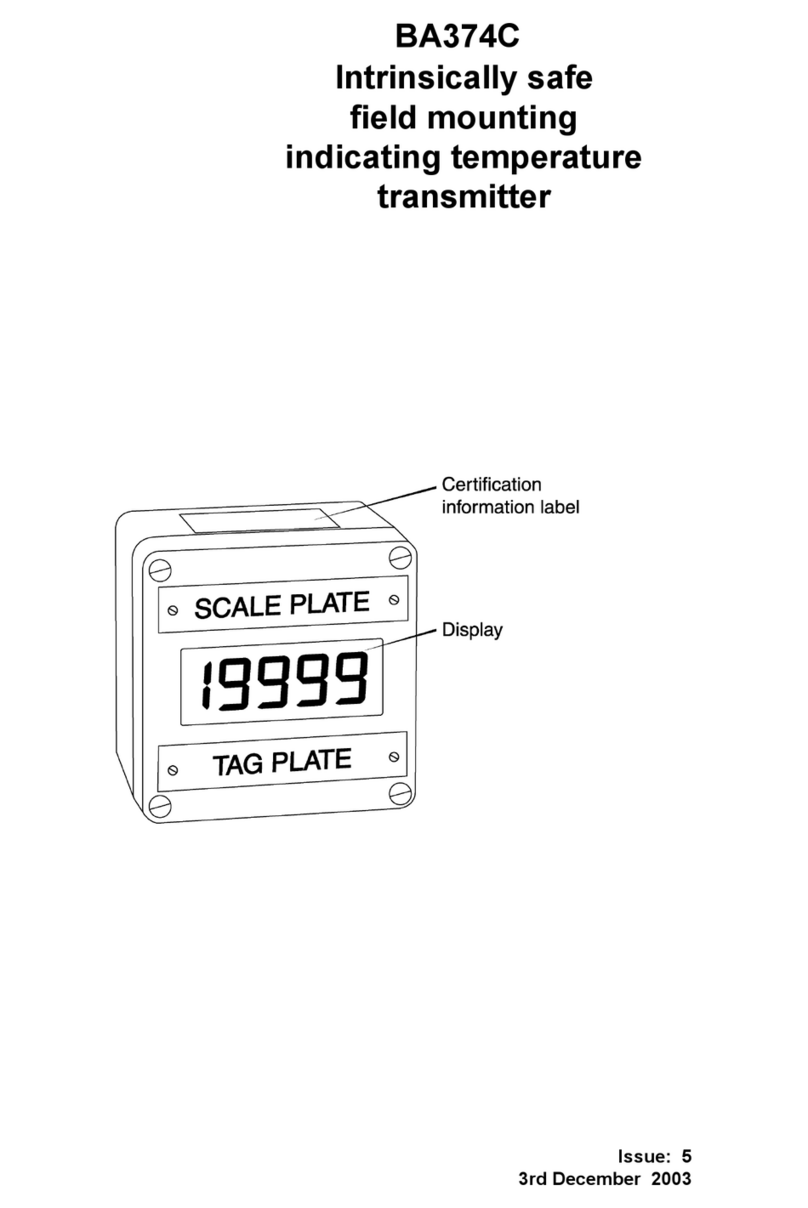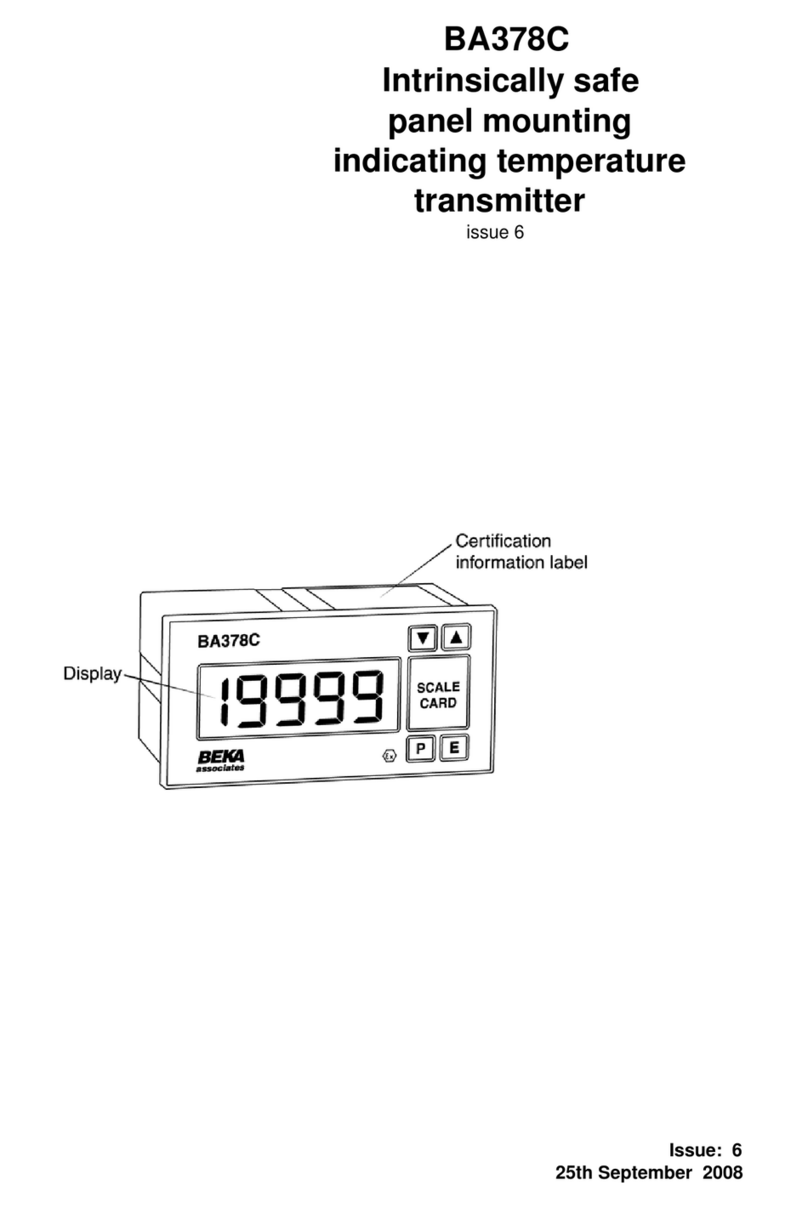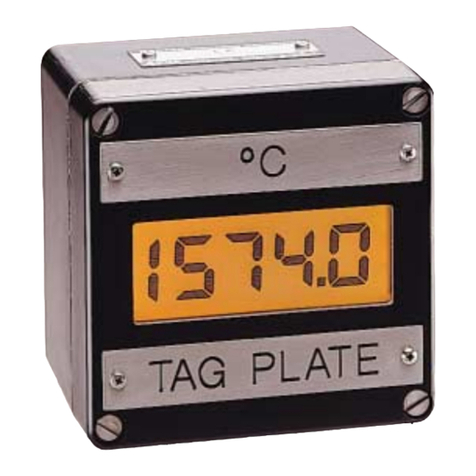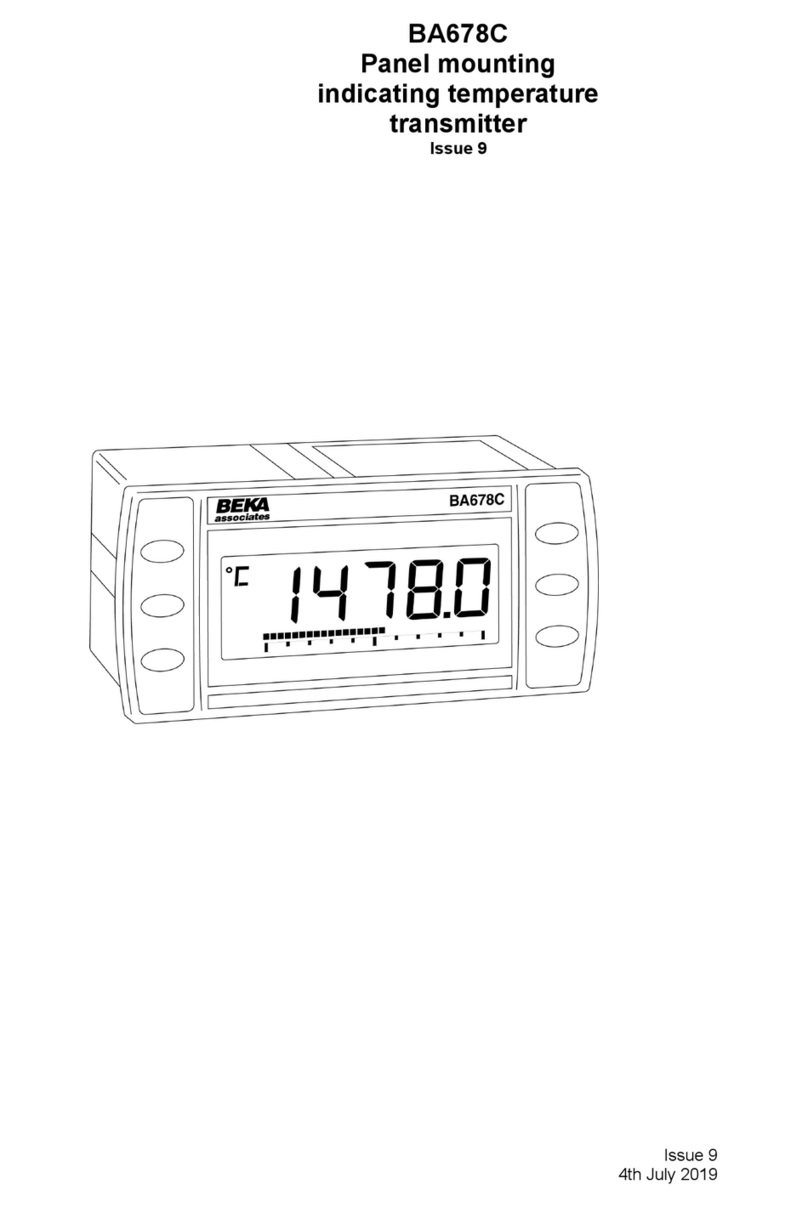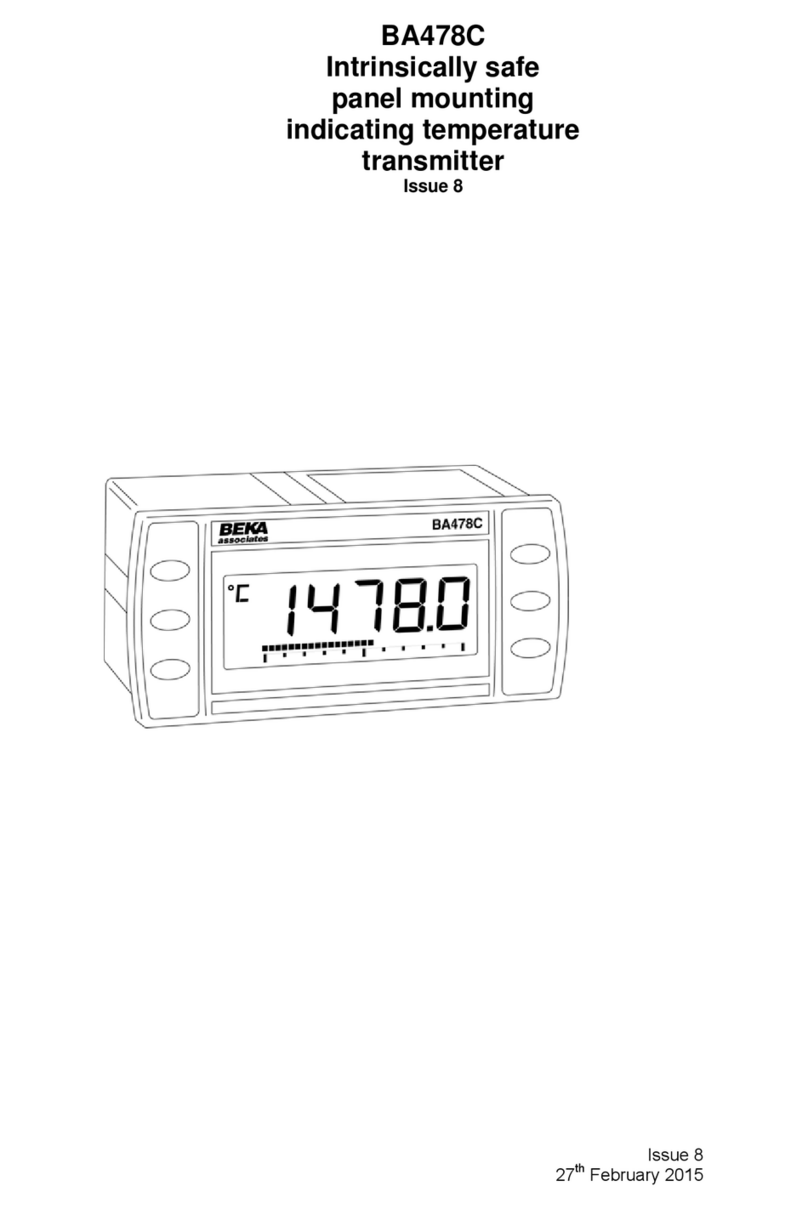
3. TYPE 'n' CERTIFICATION
3.1 Certificate of Assurance
BASEEFA has issued the BA374NC with a
Certificate of Assurance BAS No. 96Y4522
confirming compliance with BS6941:1988. This
verifies that in normal operation the BA374NC is
not capable of igniting a surrounding explosive
atmosphere, and a fault capable of causing ignition
is not likely to occur.
3.2 ATEX certification
The BA374NC complies with the European ATEX
Directive 94/9/EC for Group II, Category 3G
equipment. It has been assessed using the
'Internal Control of Production' procedure specified
in Annex 8 of the Directive. A Technical Dossier
has been prepared and a EC Declaration of
Conformity number N0014 has been issued.
The instrument bears the Community Mark and,
subject to local codes of practice, may be installed
in any of the European Economic Area (EEA)
member countries. i.e. Austria, Belgium,
Denmark, Finland, France, Germany, Greece,
Ireland, Italy, Luxembourg, The Netherlands,
Portugal, Spain, Sweden, and the United Kingdom.
ATEX certificates are also accepted in Norway,
Iceland, Liechtenstein, Switzerland and the Czech
Republic. This manual describes installations
which conform with BS EN60079:Part14:1997
Electrical Installation in Hazardous Areas. When
designing systems for installation outside the UK,
the local code of practice should be consulted.
3.3 Zones, gas groups and T rating
The BA324NC has an EEx nL IIC T5, Tamb -40 to
60oC safety code as defined in BS EN50021:1999
Electrical apparatus for potentially explosive
atmospheres - Type of protection 'n'.
'L' indicates that the BA374NC uses an
energy-limiting technique to achieve compliance
as defined in Clause 21 of BS EN50021:1999.
This technique is based on the philosophy of
intrinsic safety which limits the current and voltage
applied to components which may generate a
spark in normal operation e.g. switches and
switches and potentiometers.
These approvals confirm that the BA374NC is
'safe in normal operation' and may be installed in:
Zone 2 explosive gas air mixture not
likely to occur, and if it does, it
will only exist for a short time.
Be used with gases in groups:
Group A propane
Group B ethylene
Group C hydrogen
Having a temperature classification of:
T1 450oC
T2 300oC
T3 200oC
T4 135oC
T5 100oC
This allows the BA374NC to be installed in Zone 2
and to be used with most common industrial
gases.
3.4 Certification label information
Certification information is shown on a label fitted
in a recess on the top outer surface of the
enclosure. It shows the ATEX certification
information and the Certificate of Assurance with
BS6941:1988. The instrument serial number and
date of manufacture are shown on a separate label
within the enclosure.
4. ELECTRICAL SYSTEM DESIGN FOR
INSTALLATION IN HAZARDOUS AREAS
There are two basic requirements when designing
a loop incorporating a BA374NC:
1. To comply with the EEx nL certification, in
normal operation i.e. without any faults, the
safe area power supply must have an output
voltage of less than 30V.
The safety compents within the BA374NC
will automatically ensure that the output
current does not exceed 25mA in normal
operation.
2. To ensure correct operation of the
transmitter the voltage between terminals 5
& 6 of the BA374NC must be between 10
and 30V at all output currents.
Fig 2 illustrates a typical temperature measuring
loop. The BA374NC is located in Zone 2 and
powered from a supply in the safe area.
WARNING
The enclosure cover should only be
removed when the measurement loop
is not energised, or when there is no
risk of a flammable atmosphere being
present and dust or water can not enter
the enclosure. Before replacing the
enclosure cover ensure that the sealing
gasket is undamaged and is free from
dirt and foreign bodies.
6
